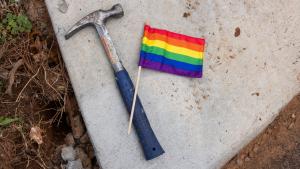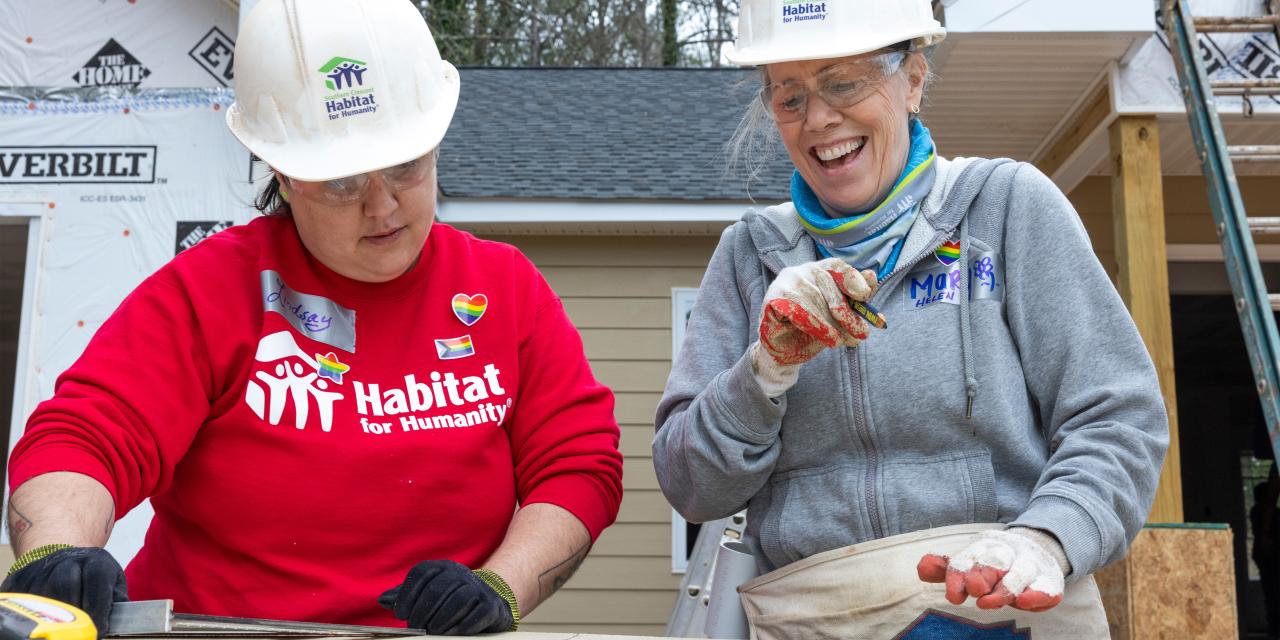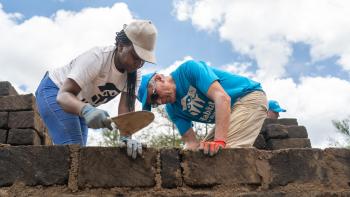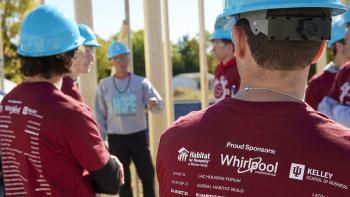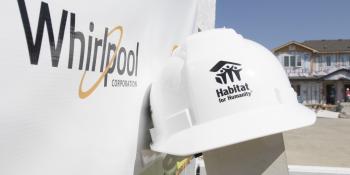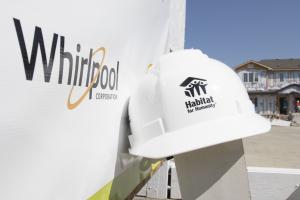Photo gallery: Pride Build
Habitat for Humanity partners with people of all backgrounds year-round to help build decent housing, and our affiliate-run Pride Builds bring together local members of the LGBTQ+ community, allies and homeowners to work side-by-side on the build site.
Habitat for Humanity partners with people of all backgrounds year-round to help build decent housing, and our affiliate-run Pride Builds bring together local members of the LGBTQ+ community, allies and homeowners to work side-by-side on the build site.
Want to be a part?
Ask your local Habitat if there are Pride Build programs and volunteer events in your area.
Through these events, we strive to not only celebrate our LGBTQ+ homeowners, volunteers and community members, but also to shed light on the decades of systemic LGBTQ+ housing discrimination that have barred families and individuals from homeownership, creating biases and inequities that exist today.
Check out photos below from a Pride Build at Southern Crescent Habitat for Humanity in Jonesboro, Georgia.
The event was a collaboration between the affiliate and Spectrum, an employee resource group at Habitat for Humanity International for LGBTQ+ employees and their allies that aims to raise awareness, promote inclusivity and actively support Habitat’s mission of providing decent housing for everyone.
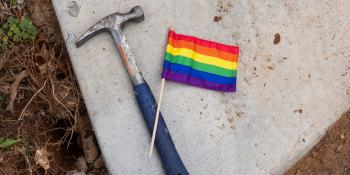
Photo gallery: Pride Build
Pride Build brings together LGBTQ+ community, allies and homeowners
